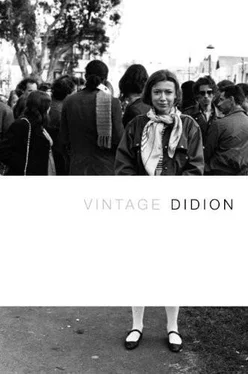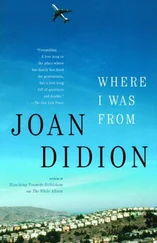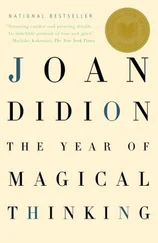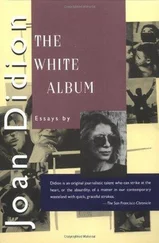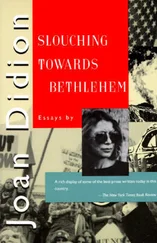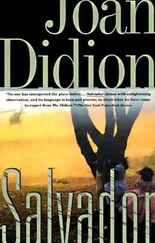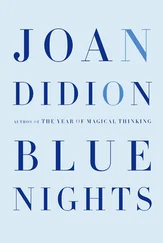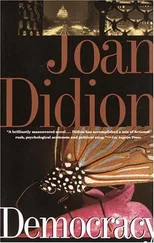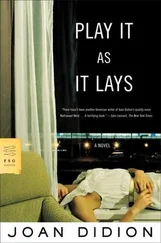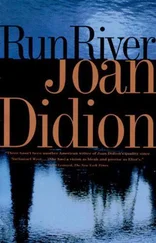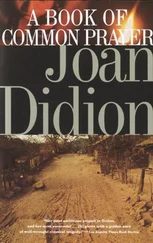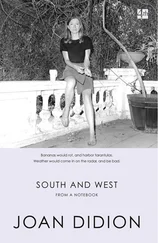Joan Didion - Vintage Didion
Здесь есть возможность читать онлайн «Joan Didion - Vintage Didion» весь текст электронной книги совершенно бесплатно (целиком полную версию без сокращений). В некоторых случаях можно слушать аудио, скачать через торрент в формате fb2 и присутствует краткое содержание. Год выпуска: 2004, Издательство: Vintage Books, Жанр: Биографии и Мемуары, Публицистика, на английском языке. Описание произведения, (предисловие) а так же отзывы посетителей доступны на портале библиотеки ЛибКат.
- Название:Vintage Didion
- Автор:
- Издательство:Vintage Books
- Жанр:
- Год:2004
- ISBN:нет данных
- Рейтинг книги:4 / 5. Голосов: 1
-
Избранное:Добавить в избранное
- Отзывы:
-
Ваша оценка:
- 80
- 1
- 2
- 3
- 4
- 5
Vintage Didion: краткое содержание, описание и аннотация
Предлагаем к чтению аннотацию, описание, краткое содержание или предисловие (зависит от того, что написал сам автор книги «Vintage Didion»). Если вы не нашли необходимую информацию о книге — напишите в комментариях, мы постараемся отыскать её.
Vintage Didion — читать онлайн бесплатно полную книгу (весь текст) целиком
Ниже представлен текст книги, разбитый по страницам. Система сохранения места последней прочитанной страницы, позволяет с удобством читать онлайн бесплатно книгу «Vintage Didion», без необходимости каждый раз заново искать на чём Вы остановились. Поставьте закладку, и сможете в любой момент перейти на страницу, на которой закончили чтение.
Интервал:
Закладка:
The aftermath, the daylight aspect, is well documented. “Nothing fresh today, I hear,” an embassy officer said when I mentioned that I had visited Puerta del Diablo. “Were there any on top?” someone else asked. “There were supposed to have been three on top yesterday.” The point about whether or not there had been any on top was that usually it was necessary to go down to see bodies. The way down is hard. Slabs of stone, slippery with moss, are set into the vertiginous cliff, and it is down this cliff that one begins the descent to the bodies, or what is left of the bodies, pecked and maggoty masses of flesh, bone, hair. On some days there have been helicopters circling, tracking those making the descent. Other days there have been militia at the top, in the clearing where the road seems to run out, but on the morning I was there the only people on top were a man and a woman and three small children, who played in the wet grass while the woman started and stopped a Toyota pickup. She appeared to be learning how to drive. She drove forward and then back toward the edge, apparently following the man’s signals, over and over again.
We did not speak, and it was only later, down the mountain and back in the land of the provisionally living, that it occurred to me that there was a definite question about why a man and a woman might choose a well-known body dump for a driving lesson. This was one of a number of occasions, during the two weeks my husband and I spent in El Salvador, on which I came to understand, in a way I had not understood before, the exact mechanism of terror.
— 1983
THE METROPOLITAN CATHEDRAL IN SAN SALVADOR, 1982
During the week before I flew down to El Salvador a Salvadoran woman who works for my husband and me in Los Angeles gave me repeated instructions about what we must and must not do. We must not go out at night. We must stay off the street whenever possible. We must never ride in buses or taxis, never leave the capital, never imagine that our passports would protect us. We must not even consider the hotel a safe place: people were killed in hotels. She spoke with considerable vehemence, because two of her brothers had been killed in Salvador in August of 1981, in their beds. The throats of both brothers had been slashed. Her father had been cut but stayed alive. Her mother had been beaten. Twelve of her other relatives, aunts and uncles and cousins, had been taken from their houses one night the same August, and their bodies had been found some time later, in a ditch. I assured her that we would remember, we would be careful, we would in fact be so careful that we would probably (trying for a light touch) spend all our time in church.
She became still more agitated, and I realized that I had spoken as a norteamericana: churches had not been to this woman the neutral ground they had been to me. I must remember: Archbishop Romero killed saying mass in the chapel of the Divine Providence Hospital in San Salvador. I must remember: more than thirty people killed at Archbishop Romero’s funeral in the Metropolitan Cathedral in San Salvador. I must remember: more than twenty people killed before that on the steps of the Metropolitan Cathedral. CBS had filmed it. It had been on television, the bodies jerking, those still alive crawling over the dead as they tried to get out of range. I must understand: the Church was dangerous.
I told her that I understood, that I knew all that, and I did, abstractly, but the specific meaning of the Church she knew eluded me until I was actually there, at the Metropolitan Cathedral in San Salvador, one afternoon when rain sluiced down its corrugated plastic windows and puddled around the supports of the Sony and Phillips billboards near the steps. The effect of the Metropolitan Cathedral is immediate, and entirely literary. This is the cathedral that the late Archbishop Oscar Arnulfo Romero refused to finish, on the premise that the work of the Church took precedence over its display, and the high walls of raw concrete bristle with structural rods, rusting now, staining the concrete, sticking out at wrenched and violent angles. The wiring is exposed. Fluorescent tubes hang askew. The great high altar is backed by warped ply-board. The cross on the altar is of bare incandescent bulbs, but the bulbs, that afternoon, were unlit: there was in fact no light at all on the main altar, no light on the cross, no light on the globe of the world that showed the northern American continent in gray and the southern in white; no light on the dove above the globe, Salvador del Mundo . In this vast brutalist space that was the cathedral, the unlit altar seemed to offer a single ineluctable message: at this time and in this place the light of the world could be construed as out, off, extinguished.
In many ways the Metropolitan Cathedral is an authentic piece of political art, a statement for El Salvador as Guernica was for Spain. It is quite devoid of sentimental relief. There are no decorative or architectural references to familiar parables, in fact no stories at all, not even the Stations of the Cross. On the afternoon I was there the flowers laid on the altar were dead. There were no traces of normal parish activity. The doors were open to the barricaded main steps, and down the steps there was a spill of red paint, lest anyone forget the blood shed there. Here and there on the cheap linoleum inside the cathedral there was what seemed to be actual blood, dried in spots, the kind of spots dropped by a slow hemorrhage, or by a woman who does not know or does not care that she is menstruating.
There were several women in the cathedral during the hour or so I spent there, a young woman with a baby, an older woman in house slippers, a few others, all in black. One of the women walked the aisles as if by compulsion, up and down, across and back, crooning loudly as she walked. Another knelt without moving at the tomb of Archbishop Romero in the right transept. “LOOR A MONSENOR ROMERO,” the crude needlepoint tapestry by the tomb read, “Praise to Monsignor Romero from the Mothers of the Imprisoned, the Disappeared, and the Murdered,” the Comité de Madres y Familiares de Presos, Desaparecidos, y Asesinados Politicos de El Salvador.
The tomb itself was covered with offerings and petitions, notes decorated with motifs cut from greeting cards and cartoons. I recall one with figures cut from a Bugs Bunny strip, and another with a pencil drawing of a baby in a crib. The baby in this drawing seemed to be receiving medication or fluid or blood intravenously, through the IV line shown in its wrist. I studied the notes for a while and then went back and looked again at the unlit altar, and at the red paint on the main steps, from which it was possible to see the guardsmen on the balcony of the National Palace hunching back to avoid the rain. Many Salvadorans are offended by the Metropolitan Cathedral, which is as it should be, because the place remains perhaps the only unambiguous political statement in El Salvador, a metaphorical bomb in the ultimate power station.
— 1983
MIAMI ONE
Havana vanities come to dust in Miami. On the August night in 1933 when General Gerardo Machado, then president of Cuba, flew out of Havana into exile, he took with him five revolvers, seven bags of gold, and five friends, still in their pajamas. Gerardo Machado is buried now in a marble crypt at Woodlawn Park Cemetery in Miami, Section Fourteen, the mausoleum. On the March night in 1952 when Carlos Prío Socarrás, who had helped depose Gerardo Machado in 1933 and had fifteen years later become president himself, flew out of Havana into exile, he took with him his foreign minister, his minister of the interior, his wife and his two small daughters. A photograph of the occasion shows Señora de Prío, quite beautiful, boarding the plane in what appears to be a raw silk suit, and a hat with black fishnet veiling. She wears gloves, and earrings. Her makeup is fresh. The husband and father, recently the president, wears dark glasses, and carries the younger child, María Elena, in his arms.
Читать дальшеИнтервал:
Закладка:
Похожие книги на «Vintage Didion»
Представляем Вашему вниманию похожие книги на «Vintage Didion» списком для выбора. Мы отобрали схожую по названию и смыслу литературу в надежде предоставить читателям больше вариантов отыскать новые, интересные, ещё непрочитанные произведения.
Обсуждение, отзывы о книге «Vintage Didion» и просто собственные мнения читателей. Оставьте ваши комментарии, напишите, что Вы думаете о произведении, его смысле или главных героях. Укажите что конкретно понравилось, а что нет, и почему Вы так считаете.
